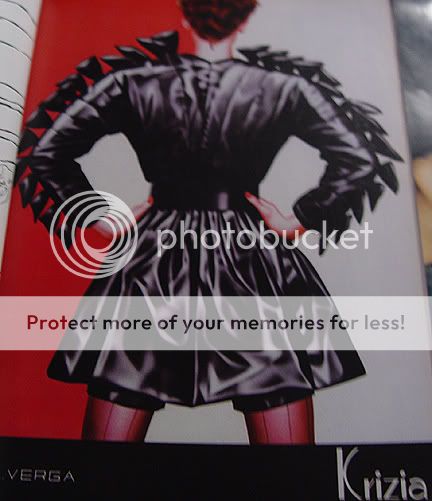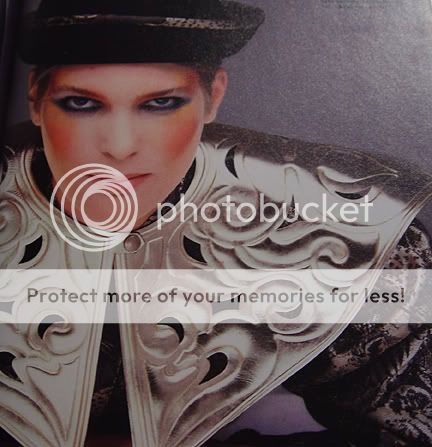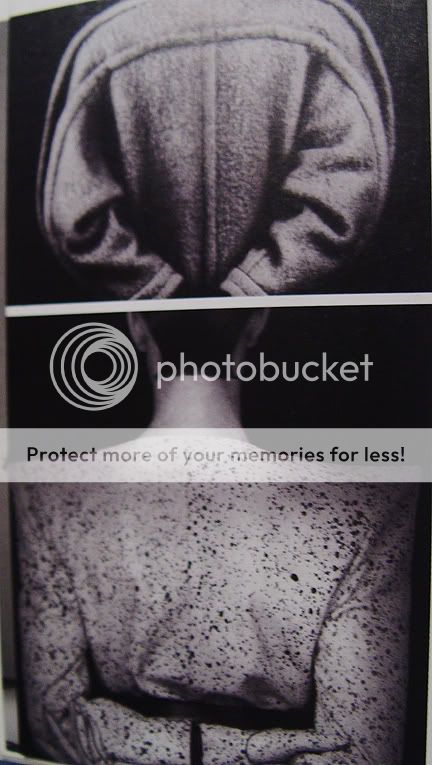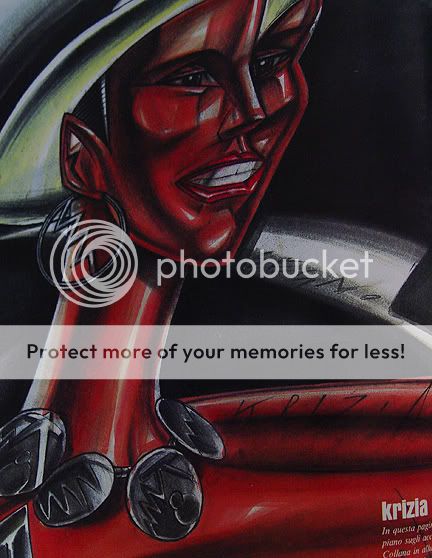fashion.fashoff
Member
- Joined
- Jun 6, 2008
- Messages
- 369
- Reaction score
- 5
couldn't find a thread about krizia, the italian house founded by mariuccia mandelli in 1957 (and still active today). i love her sculptural stuff from the 80s, like the chrysler building jumpsuits. the jacket with pointed shoulders pictured below reminds me of some of the current shoulders that came out after margiela reintroduced that shape recently. the krizia animal motif sweaters were quite popular, although i don't like those too much. i'm not too familiar with krizia designs before the 80s.
answers.com
mariuccia mandelli

guidoharari.com
various 80s krizia garments:
inspired by the chrysler building:

accademmianews.it
scans by me from various sources:








krizia 1981 & 1992 animal sweaters

etsy.com
The success of the Milanese firm Krizia and, in fact, the prominence of Milanese fashion that occurred during the 1980s and 1990s are both largely due to the efforts of Krizia's founder and designer, Mariuccia Mandelli. Originally an elementary school teacher, Mandelli cofounded the company in 1957 with Flora Dolci and took its name from Plato's dialogue on female vanity. Mandelli was an originator of the major contrast trend in which simple, classic tailoring was punctuated with original and amusing accents to create a new face for stylish ready-to-wear that was both eminently wearable and exuberantly youthful.
- Born: Bergamo, Italy, 1933.
- Family: Married to Aldo Pinto.
- Career: Elementary school teacher, Milan, 1952-54, designer/founder, with Flora Dolci, of Krizia fashion firm, Milan, from 1954; showed first collection, Krizia, 1957; first major fashion show, 1964; founded Kriziamaglia knitwear, 1966, and Kriziababy children's clothes, 1968; subsequently established Krizia boutiques in Milan, Tokyo, London, New York, Detroit, Houston; owner, the K Club, West Indies, from 1996; launched home collection, 1997; signed with Grace Silver to open three Krizia stores in China, 1998; several new licensing agreements, including Krizia World, Krizia Eyewear, Segreti di Krizia, and Krizia Kids, 1999; introduced new fragrance, Easy Krizia, 1999; Alber Elbaz hired as design consultant, then replaced by Jean-Paul Knott, 2000; new boutique opened in Moscow, 2000.
- Exhibitions:Italian Revolution, La Jolla Museum of Art, California, 1982; 40 Years of Italian Fashion, Trump Towers, New York, 1983; traveling retrospective, Grey Art Gallery, New York, 1999.
- Awards: Fashion Press award, Florence, 1964; made a Knight of the Italian Republic, Rome, 1986; named "Ideal Woman Leader of the Year," St. Vincent, Italy, 1987.
- Address: Krizia SpA, Via Manin 19, 20121 Milan, Italy.
- Website:www.krizia.net.
Among Krizia's early, important presentations was a showing at Orsini's on the invitation of Jean Rosenberg, vice president of Bendel's. It was on this occasion that Mandelli was labeled Crazy Krizia by the fashion press for her combinations of simple shapes with madcap details. In 1976 Bergdorf Goodman featured stock by Krizia and other Milan designers, providing the final step necessary for the Italians' rise to the forefront of the fashion industry.
Representative of what has been called Krizia's "rough and sweet" look are Mandelli's 1977 outfittings consisting of nylon undershirts topped by matching rose-colored, dove-gray mohair bed jackets, or cardigans in open-knit weaves worn with dropped-waist ballerina skirts of scalloped lace. Mandelli's daywear tends toward the practical. She has, for example, put elastic waistbands on her skirts for comfortable ease of movement, and her 1982 group of sports suits of loose tweeds and checks were plain, loose, and stylized. Mandelli's use of her signature "improbable contrasts," however, abound most openly in her evening clothes, such as the mixes of satin skirts with sporty Angora sweaters. She has also presented simple slip dresses accompanied by characteristic touches of humorous flamboyance such as a long, feathered stoles or quilted jackets of satin faced in a different shade of the same color.
Mandelli has often used jodhpur pants. One 1977 outfit consisted of loose, draping jodhpurs in silk charmeuse worn with a lacy mohair camisole, the whole enlivened by the glowing berry colors she featured that year. Also among Mandelli's original fashion accomplishments is her development of what she named "harmonica pleats," which combine vertical and horizontal pleatings. Outstanding among Mandelli's designs are her knits, which include items such as her 1977 lacy, mushroom-colored evening sweater teamed with silk and eyelet taffeta and jodhpur pants. In 1981, she showed subtly sophisticated shiny knits and white Angoras bedecked with yokes of pearls.
Often appearing on Mandelli's knitwear have been her signature animal motifs, such as a jacquard crêpe blouse with the front view of a tiger on its front and rear tiger-view on its back. Not limiting herself to knitwear, Mandelli has also put highly colorful birds and parrots on that season's summer tote bags and shoulder purses. For 1984 it was the Dalmatian, sharing the scene with more streamlined suits and double-dresses such as a back-buttoned flare over a bit longer slim skirt.
In the mid-1990s, the Italian fashion world was rocked by the exposure of a bribery scandal that supposedly occurred in 1990. Top officials from Italian design houses, including Giorgio Armani, Santo Versace, Gianfranco Ferré, Mandelli, and Giralomo Etro were investigated for bribing tax officials, but the designers argued the money was nothing more than extortion by those same officials. The nasty court battle ended in 1997 when Mandelli, Versace, and Ferré were convicted and sentenced; luckily for the defendants, the sentences were suspended and in 1998 the convictions overturned.
During the infamous court proceedings, Mandelli continued to do what she did best—showing in 1996 a collection based on traditional Chinese shapes, Indian saris, Mongolian leather, and Japanese design. "It's all about very pure, simple straight lines," Mandelli said in a CNN interview. Around the same time, Mandelli fell in love with the Caribbean island of Barbuda. There she built the K Club, described by TravelWizard.com as "a personalized retreat of square, white bungalows with louvered windows and characteristic spired roofs." The cottages were designed by architect Gianni Gamondi, and the interiors reflected "Krizia's design taste right down to the doorknobs. Wooden cathedral ceilings, 14 feet high, and white ceramic tile floors add to the sense of spaciousness in the rooms."
In the fashion world, many men design clothing for women; the reverse, women designing clothing for men, is not so prominent. Mandelli is among the few women who are well known for their men's clothing lines. The small sorority of designers includes Jhane Barnes, Laura Biagiotti, Katharine Hamnett, Donna Karan, Rei Kawakubo, and Nicole Miller. Mandelli repeatedly delivers though, as the Daily News Record (15 January 1997) enthused over a Milan menswear showing, "This collection showed what buyers really come to Milan for—sharp, comfortable clothes that make any man look good."
In the last years of the century, Mandelli sought design help from several sources. The most high profile was Alber Elbaz, formerly of Yves Saint Laurent, who was hired as a consultant in 2000. The collaboration, however, lasted only three months; Elbaz left, citing his wish to return to Paris and denying any friction with Mandelli. Elbaz was soon replaced by Jean-Paul Knott, who had also worked at Yves Saint Laurent before launching his own label. For nearly five decades, Krizia has remained an integral part of the Italian fashion scene, and one of the few independent design houses left. Mariuccia Mandelli and her Krizia empire, with close to 60 worldwide boutiques and more than three-dozen licensing agreements, combines highly original designs with nervy eccentricity and wit.
Publications
On Mandelli:
- Books
- Lambert, Eleanor, The World of Fashion: People, Places, Resources, New York & London, 1976.
- Mulassano, Adrianna, I Mass-Moda: Fatti e Personaggi dell'Italian Look, Florence, 1979.
- Aragno, B.G., compiler, 40 Years of Italian Fashion [exhibition catalogue], Rome, 1983.
- Kennett, Frances, The Collector's Book of Twentieth Century Fashion, London & New York, 1983.
- McDowell, Colin, McDowell's Directory of Twentieth Century Fashion, London, 1984.
- O'Hara, Georgia, Encyclopedia of Fashion from 1840 to the 1980s, London, 1986.
- Sparke, Penny, et al., The Design Source Book, London, 1986.
- Vercelloni, Isa, Krizia: A Story, Milan, 1995.
- Stegemeyer, Ann, Who's Who in Fashion, Third Edition, New York,1996.
answers.com
mariuccia mandelli

guidoharari.com
various 80s krizia garments:
inspired by the chrysler building:

accademmianews.it
scans by me from various sources:








krizia 1981 & 1992 animal sweaters

etsy.com
Last edited by a moderator:








